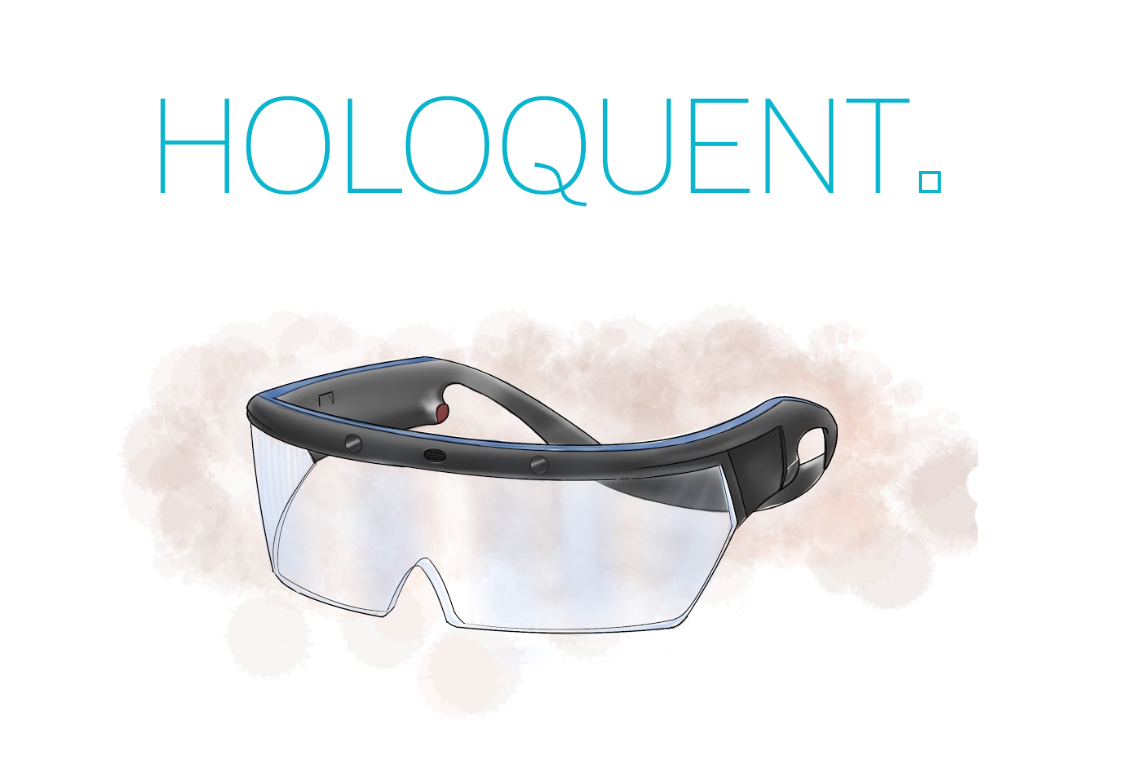HOLOQUENT
Conquering social anxiety with mixed reality
THE OPPORTUNITY
Roughly 7% of people in the U.S. deal with social anxiety disorder (SAD). College students with SAD face unique challenges, because they often need to articulate their thoughts during class discussions and presentations. But if, according to Jerry Seinfeld, “it’s better to be in the casket than give the eulogy at a funeral”, how might college students overcome their fear of public speaking and speak with confidence?
My Role: Product Manager
Tools Used: Unity, Illustrator, Premiere, Photoshop
THE PROCESS
Defining the problem
My team was made up of engineers, industrial designers, and strategists-in-training looking to tackle a challenge in the Wellness space using IoT. After discussing hundreds of options, we decided to focus on anxiety and depression. At first, our solution was to help people suffering from anxiety attacks by creating a mediation space in virtual reality.
Then, when one of our team members had an anxiety attack during a design critique, we made a crucial pivot -- from meditation spaces to spaces that helped break down social anxiety. As students we were familiar with the necessity for strong public speaking skills for presentations and collaborative work.
We researched colleges and universities that had speech centers, and found that many of them were strapped for resources. One of the speech coaches we interviewed even told us that “after one session, we urge students not to come back for two or more weeks.”
We felt that a mixed reality headset could not only offer students a more continuous learning experience, but could also help speech coaches give students data-informed feedback while working to improve their public speech.
Creating User Stories
Following conversations with students and speech centers, a few requirements emerged:
As a student, I want to practice my public speaking in a controlled environment so that I can feel confident when I present in class.
As a speech coach, I want to give each student useful feedback so that they can see tangible improvements in their ability to speak in public.
The first user story compelled our team to think about ways that a series of mixed reality experiences could help ease students into a real speech setting. By pairing both virtual and augmented reality into our solution, we realized that students could benefit from the comfort of and control of VR, and the near-reality of AR.
To fulfill the second user story, we decided to track things like body language, eye contact, and leverage biometric sensors to track heart rate. These data points would be collected in a dashboard that speech coaches would use, in addition to their personal feedback, to give students more specific and effective feedback.
THE OUTCOME
A render of the Holoquent headset, a sketch of its dual VR/AR functionality, and what the experience would look like.
Holoquent is a 10-staged speech training system. At stage 1, students begin in a VR experience where they practice their speech with 3 “individuals” in the room. As students improve, their virtual audience would grow to 25 individuals until they reach stage 5. Stages 5-10 take place in AR, where the virtual audience inhabits the participant's real space. Throughout the experience, a speech coach would be collecting data on the student’s heart rate, voice inflection and body language to assess the effectiveness of their speech, and provide useful feedback.
IN RETROSPECT…
Interdisciplinary teams win through effective communication
The sensitivity of working in a space like anxiety and navigating it gracefully
Prototypes often speak louder than words.



